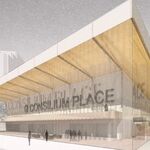Palma
Senior Member
You say to let other cities build thier own subways yet ignore the fact that Toronto does not itself pay for its subway.
And for the record why does no other city have subways in Ontario except for toronto? You have conveniently choosen not to comment on my last post regarding subsidies and the cost to provide it in places with lack of density. So I will repost.
METROPOLITAN TORONTO AND THE CAR CHANGE THE PICTURE
The TTC continued to make an operating profit until 1972 when, under political pressure from the suburban majority on council, the TTC eliminated its fare zone system which previously obliged suburban residents to pay an additional fare. By the late 1980s, the annual cost of keeping the TTC afloat was now up to a quarter of a billion dollars of taxpayers’ money, although at 32% of all revenues, this was the lowest subsidy required of any city in North America.
FLAT FARE VERSUS FARE BY DISTANCE
In 1921, one of the goals of the City of Toronto in establishing the Toronto Transportation Commission was enabling Toronto residents to travel throughout the city on a single fare, regardless of the length of the trip. Transfers between routes were free. The city was compact enough, and ridership high enough, that the Commission was able to perform this service while making back most of its costs (operating and capital expenses) from the farebox.
But the fact remained that public transit ran most profitably when people used it to take short trips. On routes where there was a good cycling of passengers on and off at each stop, each vehicle ended up carrying far more passengers enroute, and this efficiency covered expenses well. But as Toronto’s suburban growth spilled out beyond the city’s boundaries, commutes began to lengthen. This meant transit vehicles had to travel farther to carry the same number of passengers. There was less cycling of passengers on and off at each stop. Revenues decreased and expenses increased.
As the suburbs around Toronto were not part of the city proper, City Council had no qualms of charging these passengers extra to cover the extra expenses, or even imposing fare zones so that revenues per trip more closely matched the costs per trip, but after 1954, the suburban municipalities around Toronto sat with Toronto on Metro council. Also, the pace of urban sprawl increased. The densities of the suburbs decreased, meaning that public transit could no longer efficiently serve the outer suburbs and make back its costs. At least, not without a fare system that recognized the higher costs of longer commutes.
The zone fare system, while not perfect, at least managed to do this, but it was unpopular with suburban residents and their politicians who felt that all residents within Metropolitan Toronto should be covered under the same fare, regardless of the distance travelled. In the 1960s, debates over TTC fares and service on Metro council were often rancorous. At one point, the boroughs of North York and Etobicoke went to court to overturn Metropolitan Toronto’s subsidy of the TTC, unless Metro Council acceded to their demands for improved service.
When the province of Ontario reorganized Metropolitan Toronto in 1967, it gave the suburban municipalities surrounding Toronto a majority of seats on council, reflecting the increase in their population growth, and the suburban view of public transit as a subsidized public service rather than a utility that paid its own way, won out. On January 1, 1973, the two zone fare system within Metropolitan Toronto was abolished, and the zone fares outside of Metropolitan Toronto’s boundaries were combined into one. The TTC had now become wholly dependent on government operating subsidies to balance the books.
THE ESTABLISHMENT OF SUBURBAN TRANSIT AGENCIES
Earlier this decade, Mississauga Transit asked the TTC to extend the 32 Eglinton West bus into the Airport Corporate Centre northwest of the Eglinton/Renforth intersection, in the City of Mississauga. It asked that only the regular TTC fare be charged, and paid for any operating deficit the extension incurred. It later decided that this was too costly and asked the TTC to charge the Mississauga Transit fare west of Explorer Road, which was done effective January 4, 2004. In exchange for the fare increase, passengers on the route could transfer to connecting Mississauga Transit buses.
THE RIDERSHIP GROWTH STRATEGY, THE GREATER TORONTO TRANSIT AUTHORITY AND THE SMART CARD DEBATE
This has sparked a renewed debate about fare management among the transit systems. Although some suburban politicians, like the late mayor of Vaughan, Lorna Jackson, have suggested that the Greater Toronto Area be covered by a single fare, others have pointed out that the deficits that this would unleash, with travel from Square One to the Scarborough Town Centre costing as little as a trip from the Eaton Centre to the Exhibition, would bankrupt any transit organization and weigh it down with subsidies. It is generally agreed that a fare by distance scheme would have to be applied.
One of the top priorities of the Greater Toronto Transit Authority is to create a smart card fare system that would use electronic cards to tailor the amount paid by passengers to the distance travelled. The Toronto Transit Commission has been reluctant to come on board, however. As it is still catching up on the service cutbacks of the 1990s, it fears that the priorities of the GTTA is towards various schemes to benefit suburban riders, and that insufficient funding will be applied to bring services in the core up to adequate levels. The TTC notes that its capital requirements are so much larger than any of the surrounding agencies, and that changing its decades-old gravity-based fare collection system could be very costly — the equivalent of several buses and streetcars that would already be full of passengers were they operating now.
http://transit.toronto.on.ca/spare/0021.shtml




